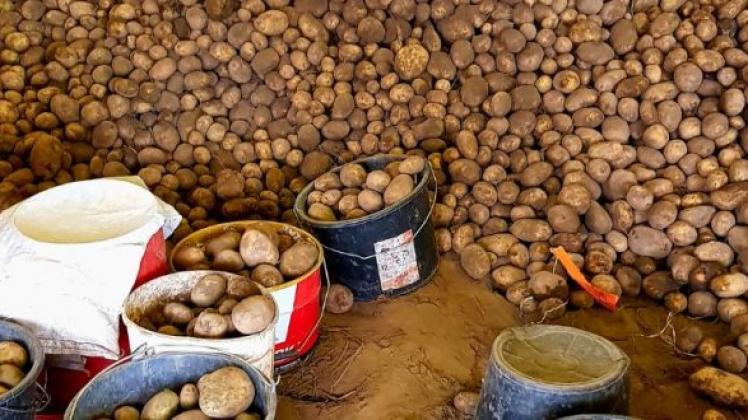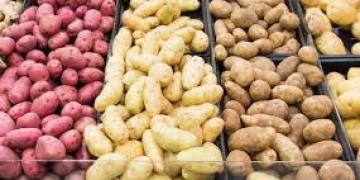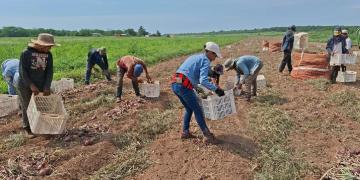EEUU: ASSESSING ADVANCED POTATO BREEDING MATERIAL FOR POSTHARVEST STORAGE
Along with working with growers and academic institutions, Munevver Dogramaci, a research plant physiologist and lead scientist of the Potato Research Program at the Edward T. Schafer Agricultural Research Center in Fargo, North Dakota,,,

,,,and Darrin Haagenson, a research plant physiologist at the Potato Research Worksite in East Grand Forks, Minnesota, assess advanced potato breeding material for postharvest storage, food quality, and safety characteristics.
“Currently, there is no method that is 100% efficient to control the physical deterioration of the potato tubers during storage. Potato tubers are at their peak nutritional quality during harvest, but it is essential to store them under specific conditions to maintain this quality,” Dogramaci mentioned.
Improved knowledge of physiological processes can aid scientists in developing post-harvest storage techniques that maintain potato marketability, nutritional value, and processing quality.
Dogramaci also noted that unintended wounding of tubers, like cuts and bruises, can also occur during harvest and post-harvest operations.
“This results in rapid quality loss that impacts the tuber’s texture, ability to retain water, and an increase in its susceptibility to diseases during storage,” Dogramaci explained.
Based in Orono and Presque Isle, Maine, Paul J. Collins is a research geneticist for the ARS Eastern potato breeding program. His goal is to create new potato varieties with enhanced agronomic qualities, disease resistance, climate resilience, and quality features for the table and chip processing industries. Among the top ten potato types farmed in the country, Atlantic is one of the successful varieties created by this initiative and is planted extensively for potato chips throughout the United States.
“Potato breeding seeks to identify new potato varieties that can provide benefits throughout the value chain. Farmers can benefit from disease resistance traits, resilience to climate variability, and improved yields. Processors and retailers are interested in maintaining quality and uniformity. Consumers are driven by improved nutrition and flavor. Within the breeding program, we see huge variability for all of these traits. The challenge and fun of potato breeding is finding a new variety which makes everyone in the value chain happy,” Collins mentioned.
Scientists at the USDA’s Agricultural Research Service (ARS) use innovative technology to study the lifecycle of potatoes (including development, production, and postharvest storage), ensuring a high-quality supply year-round for snack food processing facilities, restaurants, and grocery stores.
Potatoes are one of the main crops grown in the U.S., with a production of approximately 22.5m tons annually. Fall is the primary season for harvesting potatoes, accounting for 90% of the total production. Since many locations cannot support year-round potato cultivation, most potatoes intended for processing, such as frozen French fries or instant mashed potatoes, are harvested in the fall and safely stored until needed. Storing and maintaining potatoes at their top nutritional quality while meeting consumer and market demands is essential for the industry.
Yet, potato producers face several critical challenges, including climate- and disease-related challenges during crop production and long-term storage. Maintenance of post-harvest quality is of prime concern to the potato industry because post-harvest crop losses through physiological and disease-related processes routinely reach 10-15%. These challenges include factors such as early sprouting, as well as slow wound healing of potato tubers inadvertently damaged during the operational process.
Immediately after harvest and for an indeterminate period thereafter, potato tubers are physiologically dormant and will not sprout even when they are placed in growth-promoting conditions. The length of the tuber dormancy period is determined by the genetics of the potato cultivar, and environmental conditions during the crop production and post-harvest storage—including temperature, humidity, light, and air composition. Premature sprouting or incomplete wound-healing adversely affects potato processing quality and nutritional value, resulting in lower producer prices or even complete market rejection by the industry and fresh market.
Fuente: https://www.potatobusiness.com/storage/assessing-advanced-potato-breeding-material-for-postharvest-storage/




